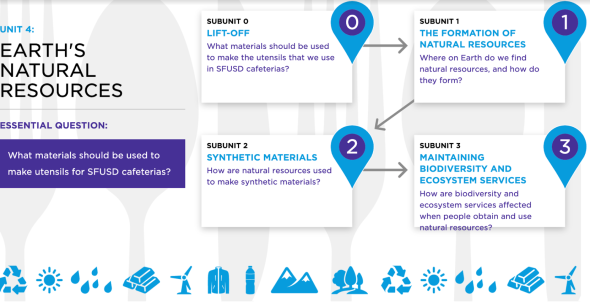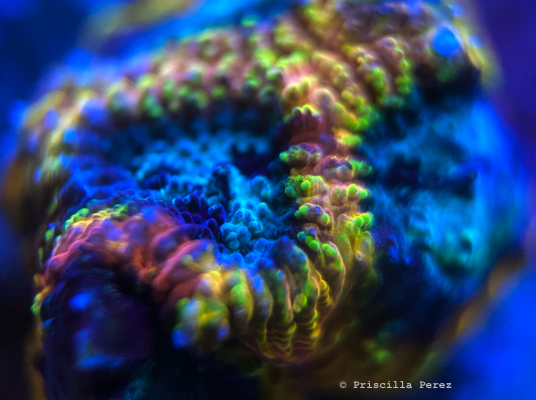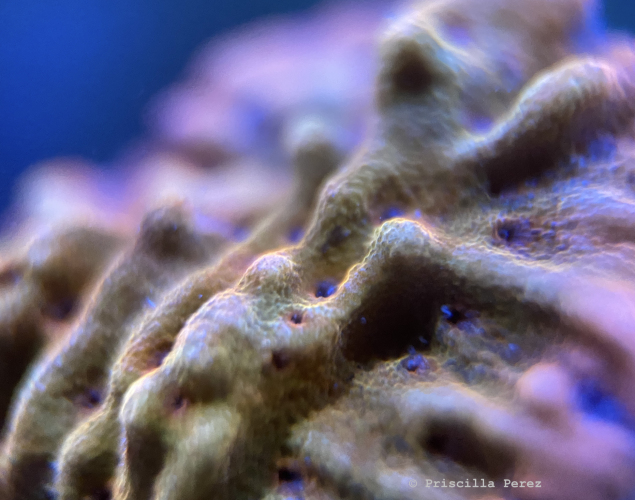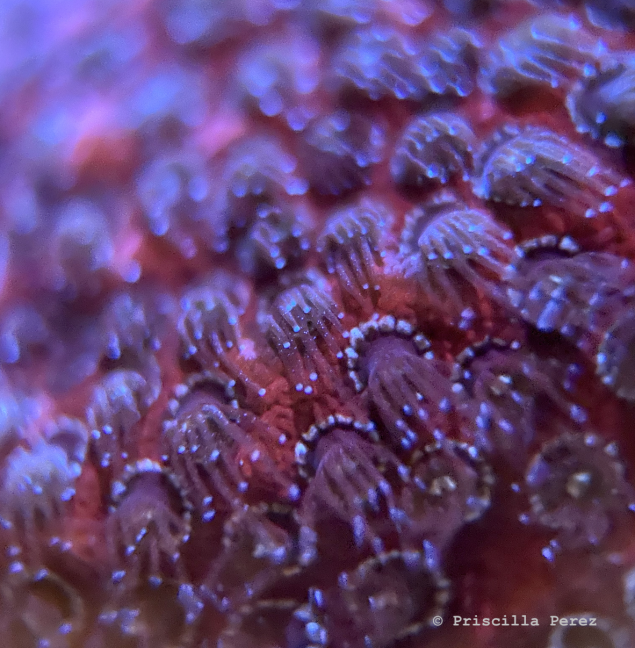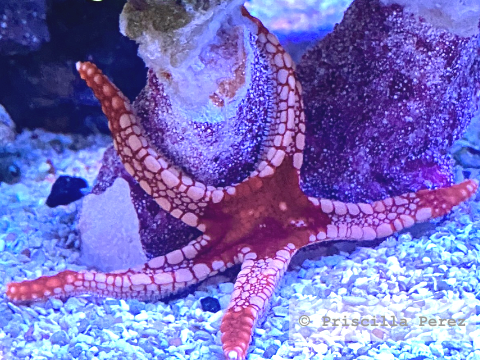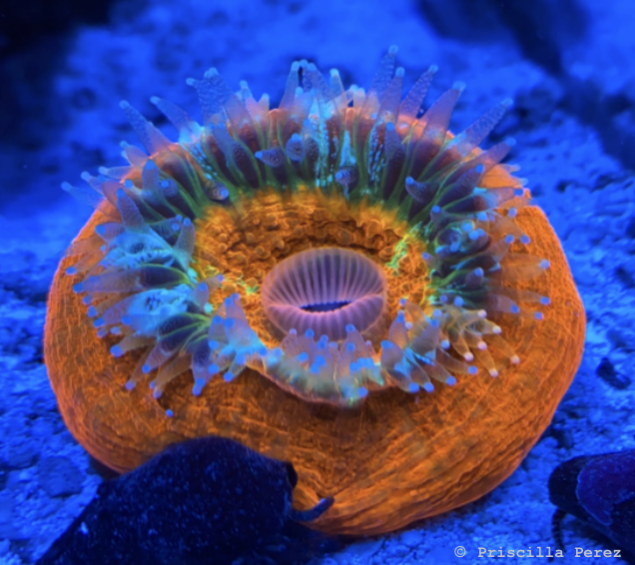Subunit 1: The Formation of Natural Resources
Link to this section
Below you will view and download:
🟦 Subunit Assessment Opportunities
🟦 5E Lesson Sequence
Subunit 1: Assessment Opportunities
Subunit 1 Assessment Opportunites
View and download (by making a copy)- Subunit 1 Assessments
What should my students know and be able to do?
What should I prioritize?
|
|
|
|
|
|
|
|
|
|
|
|
|
|
|
|
|
|
|
|
|
|
|
|
|
|
|
|
|
|
View and download (by making a copy)- Subunit 1 Assessments
Subunit 1: 5E Lesson Sequence
Subunit Description
📂 Download ALL lessons at one time for Unit 4: Subunit 1 from this folder. 📂
In this subunit, students construct an explanation about how geoscience processes have created an unequal distribution of natural resources on Earth. They focus on the formation of oil, minerals and metals, and groundwater. Students apply what they learn to their Culminating Projects by considering the formation of the natural resources used to make the different types of materials selected for the utensil.
| Lesson | Lesson Name | Teacher Document | Student Handout |
|---|---|---|---|
| 1 | Engage | ||
| 2 | Explore | ||
| 3 | Explain | ||
| 4 | Elaborate | 7.4 SU1 4Elaborate Teacher | |
| 5 | Evaluate |
📂 Download ALL lessons at one time for Unit 4: Subunit 1 from this folder. 📂
Subunit 2: Synthetic Materials
Link to this section
Below you will view and download:
🟦 Subunit Assessment Opportunities
🟦 5E Lesson Sequence
Subunit 2: Assessment Opportunities
Subunit 2 Assessment Opportunites
View and download (by making a copy)- Subunit 2 Assessments
What should my students know and be able to do?
What should I prioritize?
|
|
|
|
|
|
|
|
|
|
|
|
|
|
|
|
|
|
|
|
|
|
|
|
|
|
|
|
|
|
View and download (by making a copy)- Subunit 2 Assessments
Subunit 2: 5E Lesson Sequence
Subunit Description
📂 Download ALL lessons at one time for Unit 4: Subunit 2 from this folder. 📂
In this subunit, students will gather and analyze information about how synthetic materials are made from natural resources. They will also consider the pros and cons of using natural and synthetic materials to meet our needs.
| Lesson | Lesson Name | Teacher Document | Student Handout |
|---|---|---|---|
| 1 | Engage | ||
| 2 | Explore | ||
| 3 | Explain | ||
| 4 | Elaborate | 7.4 SU2 4Elaborate Teacher | |
| 5 | Evaluate |
📂 Download ALL lessons at one time for Unit 4: Subunit 2 from this folder. 📂
Subunit 3: Maintaining Biodiversity and Ecosystem Services
Link to this section
Below you will view and download:
🟦 Subunit Assessment Opportunities
🟦 5E Lesson Sequence
Subunit 3: Assessment Opportunities
Subunit 3 Assessment Opportunites
View and download (by making a copy)- Subunit 3 Assessments
What should my students know and be able to do?
What should I prioritize?
|
|
|
|
|
|
|
|
|
|
|
|
|
|
|
|
|
|
|
|
|
|
|
|
|
|
|
|
|
|
View and download (by making a copy)- Subunit 3 Assessments
Subunit 2: 5E Lesson Sequence
Subunit Description
📂 Download ALL lessons at one time for Unit 4: Subunit 3 from this folder. 📂
In this subunit, students explore the concepts of biodiversity and ecosystem services. This concept helps them understand that all natural resources used to meet our needs and wants come from ecosystems. They analyze life cycle diagrams and Life Cycle Assessment tables to determine which type of material would have the least impact on ecosystem services. Students apply what they learn to come up with a recommendation for the best type of material for utensils to use in San Francisco Unified School District cafeterias based on that material’s impact on ecosystem services.
| Lesson | Lesson Name | Teacher Document | Student Handout |
|---|---|---|---|
| 1 | Engage | ||
| 2 | Explore | ||
| 3 | Explain | ||
| 4 | Elaborate | 7.4 SU3 4Elaborate Teacher | |
| 5 | Evaluate |
7.4 SU3 5Evaluate Graphic Organizer HO 7.4 SU3 5Evaluate Peer Feedb. Letter Temp.
|
📂 Download ALL lessons at one time for Unit 4: Subunit 3 from this folder. 📂
Unit 4: Earth's Natural Resources Documents
Link to this section
Below you will view and download: Unit Plan, Standards, Culminating Project Assessments and Rubrics, Common Misconceptions, Materials, Unit 0: Lift-Off Lessons and Resources.
7.4 Earth's Natural Resources: Overview
Overview
Through investigations, students consider how natural resources are formed, obtained, and used by humans. Students also consider the impact their use of natural resources has on biodiversity and ecosystems. In Subunit 1, students construct an explanation about how geoscience processes have created an unequal distribution of natural resources on Earth. In Subunit 2, students gather and analyze information about how synthetic materials are made from natural resources. They also consider the pros and cons of using natural and synthetic materials to meet our needs. In Subunit 3, students learn about how biodiversity and ecosystem services provide benefits to all species, including humans. In the Culminating Project, they consider what type of material should be used to make utensils for San Francisco Unified School District (SFUSD) cafeterias. Currently, the food services department at SFUSD provides each school cafeteria with traditional plastic sporks and knives. Students consider whether to change to metal or biodegradable plastic utensils or to keep the plastic ones. To evaluate each choice, students consider four criteria: human needs, conserving natural resources, maintaining biodiversity and ecosystem services, and cost.
For the Group Culminating Project, students work together to prepare a presentation on what materials they think would be best to make the eating utensils used in SFUSD cafeterias. The presentation addresses conserving natural resources and maintaining biodiversity and ecosystems. For the Individual Culminating Project, each student writes a feedback letter about a group's presentation.
7.4 Earth's Natural Resources: Unit Plan
Unit 4: Earth's Natural Resources - Unit Plan
|
|
||
|
|
||
|
Construct a scientific explanation based on evidence for how the uneven distributions of Earth’s mineral, energy, and groundwater resources are the result of past and current geoscience processes. [Clarification Statement: Emphasis is on how these resources are limited and typically non-renewable, and how their distributions are significantly changing as a result of removal by humans. Examples of uneven distributions of resources as a result of past processes include but are not limited to petroleum (locations of the burial of organic marine sediments and subsequent geologic traps), metal ores (locations of past volcanic and hydrothermal activity associated with subduction zones), and soil (locations of active weathering and/or deposition of rock).] [Clarification Statement: Emphasis is on natural resources that undergo a chemical process to form the synthetic material. Examples of new materials could include new medicine, foods, and alternative fuels.] [Assessment Boundary: Assessment is limited to qualitative information.]
[Clarification Statement: Examples of ecosystem services could include water purification, nutrient recycling, and prevention of soil erosion. Examples of design solution constraints could include scientific, economic, and social considerations.]
|
|
|
|
|
||
|
|
||
|
|
||
|
|
||
|
|
||
|
|
||
|
|
||
|
|
||
|
|
||
|
|
|
|
||||
|
|
|
|
|
|
|
|
|
|
|
|
|
|
|
|
|
|
|
|
|
|
||
|
|
||||
|
|
|
|
||
|
|
|
|||
|
|
|
|
|
|
|
|
||||
|
|
|
|
|
|
|
|
|
|
|
|
|
|
|
|||
|
|
|
|
||
|
|
|
|
|
|
|
|
|
|
|
|
|
|
|
|
||
“Disciplinary Core Ideas, Science and Engineering Practices, and Crosscutting Concepts” are reproduced verbatim from A Framework for K-12 Science Education: Practices, Crosscutting Concepts, and Core Ideas. DOI: https://doi.org/10.17226/13165. National Research Council; Division of Behavioral and Social Sciences and Education; Board on Science Education; Committee on a Conceptual Framework for New K-12 Science Education Standards. National Academies Press, Washington, DC. This material may be reproduced for noncommercial purposes and used by other parties with this attribution. If the original material is altered in any way, the attribution must state that the material is adapted from the original. All other rights reserved.
7.4 Earth's Natural Resources: Standards
Earth's Natural Resources
Next Generation Science Standards Performance Expectations
|
|
|
|
|
Emphasis is on natural resources that undergo a chemical process to form the synthetic material. Examples of new materials could include new medicine, foods, and alternative fuels.] [Assessment Boundary: Assessment is limited to qualitative information.] |
|
|
|
|
|
|
NGSS Lead States. 2013. Next Generation Science Standards: For States, By States. Washington, DC: The National Academies Press.
Disciplinary Core Ideas
ESS3.A: Natural Resources
- Humans depend on Earth’s land, ocean, atmosphere, and biosphere for many different resources. Minerals, fresh water, and biosphere resources are limited, and many are not renewable or replaceable over human lifetimes. These resources are distributed unevenly around the planet as a result of past geologic processes. (MS-ESS3-1)
PS1.A: Structure and Properties of Matter
- Each pure substance has characteristic physical and chemical properties (for any bulk quantity under given conditions) that can be used to identify it. (MS-PS1-3)
PS1.B: Chemical Reactions
- Substances react chemically in characteristic ways. In a chemical process, the atoms that make up the original substances are regrouped into different molecules, and these new substances have different properties from those of the reactants. (MS-PS1-3)
ETS1.B: Developing Possible Solutions
- There are systematic processes for evaluating solutions with respect to how well they meet the criteria and constraints of a problem. (MS-ETS1-2) (MS-LS2-5)
LS2.C: Ecosystem Dynamics, Functioning, and Resilience
- Biodiversity describes the variety of species found in Earth’s terrestrial and oceanic ecosystems. The completeness or integrity of an ecosystem’s biodiversity is often used as a measure of its health. (MS-LS2-5)
LS4.D: Biodiversity and Humans
- Changes in biodiversity can influence humans’ resources, such as food, energy, and medicines, as well as ecosystem services that humans rely on—for example, water purification and recycling. (MS-LS2-5)
Science and Engineering Practices
Constructing Explanations and Designing Solutions
- Constructing explanations and designing solutions in 6–8 builds on K–5 experiences and progresses to include constructing explanations and designing solutions supported by multiple sources of evidence consistent with scientific ideas, principles, and theories.
- Construct a scientific explanation based on valid and reliable evidence obtained from sources (including the students’ own experiments) and the assumption that theories and laws that describe the natural world operate today as they did in the past and will continue to do so in the future. (MS-ESS3-1)
*Obtaining, Evaluating, and Communicating Information (Focal Practice)
- Obtaining, evaluating, and communicating information in 6–8 builds on K–5 and progresses to evaluating the merit and validity of ideas and methods.
- Gather, read, and synthesize information from multiple appropriate sources and assess the credibility, accuracy, and possible bias of each publication and methods used, and describe how they are supported or now supported by evidence. (MS-PS1-3)
Asking Questions and Defining Problems
- Asking questions and defining problems in grades 6–8 builds from grades K–5 experiences and progresses to specifying relationships between variables, and clarifying arguments and models.
- Ask questions that can be investigated within the scope of the classroom, outdoor environment, and museums and other public facilities with available resources and, when appropriate, frame a hypothesis based on observations and scientific principles. (MS-PS2-3)
Engaging in Argument from Evidence
- Engaging in argument from evidence in 6–8 builds from K–5 experiences and progresses to constructing a convincing argument that supports or refutes claims for either explanations or solutions about the natural and designed world.
- Evaluate competing design solutions based on jointly developed and agreed-upon design criteria. (MS-ETS1-2) (MS-LS2-5)
Crosscutting Concepts
*Cause and Effect (Focal Crosscutting Concept)
- Cause and effect relationships may be used to predict phenomena in natural or designed systems. (MS-ESS3-1)
Structure and Function
- Structures can be designed to serve particular functions by taking into account properties of different materials, and how materials can be shaped and used. (MS-PS1-3)
Stability and Change
- Small changes in one part of a system might cause large changes in another part. (MS-LS2-5)
Connections to the Nature of Science
Science Addresses Questions About the Natural and Material World
-
Scientific knowledge can describe the consequences of actions but does not necessarily prescribe the decisions that society takes. (MS-LS2-5)
“Disciplinary Core Ideas, Science and Engineering Practices, and Crosscutting Concepts” are reproduced verbatim from A Framework for K-12 Science Education: Practices, Crosscutting Concepts, and Core Ideas. DOI: https://doi.org/10.17226/13165. National Research Council; Division of Behavioral and Social Sciences and Education; Board on Science Education; Committee on a Conceptual Framework for New K-12 Science Education Standards. National Academies Press, Washington, DC. This material may be reproduced for noncommercial purposes and used by other parties with this attribution. If the original material is altered in any way, the attribution must state that the material is adapted from the original. All other rights reserved.
Connections to Engineering, Technology, and Applications of Science
Interdependence of Science, Engineering, and Technology
- Engineering advances have led to important discoveries in virtually every field of science, and scientific discoveries have led to the development of entire industries and engineered systems. (MS-PS1-3)
Influence of Science, Engineering, and Technology on Society and the Natural World
- All human activity draws on natural resources and has both short and long-term consequences, positive as well as negative, for the health of people and the natural environment. (MS-ESS3-1)
- The uses of technologies and any limitation on their use are driven by individual or societal needs, desires, and values; by the findings of scientific research; and by differences in such factors as climate, natural resources, and economic conditions. Thus technology use varies from region to region and over time. (MS-PS1-3)(MS-LS2-5)
NGSS Lead States. 2013. Next Generation Science Standards: For States, By States. Washington, DC: The National Academies Press.
Link to Connect the 7th Grade Earth’s Natural Resources Unit with Prior Knowledge.
7.4 Earth's Natural Resources: Culminating Project Assessments and Rubrics
Culminating Project Assessments and Rubrics
📂Download ALL files from 7.4 Culminating Project Assessments folder.📂
| Culminating Project File Docs |
|---|
| 7.4 Main–Culminating Projects |
| 7.4 Oral Presentation Rubric |
| 7.4 Science and Engineering Content Rubric |
| 7.4 Science and Engineering Practices Rubric |
📂Download ALL files from 7.4 Culminating Project Assessments folder.📂
7.4 Earth's Natural Resources: Common Misconceptions
Common Misconceptions
Lift-Off
|
|
|
|
|
|
Subunit 1: The Formation of Natural Resources
|
|
|
|
|
|
Subunit 2: Synthetic Materials
|
|
|
|
|
|
Subunit 3: Maintaining Biodiversity and Ecosystem Services
|
|
|
|
|
|
7.4 Earth's Natural Resources: Materials
Materials
The Unit 4: Earth’s Natural Resources Materials table includes all of the items needed to teach five sections of this unit in a classroom of 32 students (eight groups of four).
A detailed breakdown of how these items are used throughout the unit can be found in your Teacher Background Section at the subunit level and in each individual lesson in your Teacher Edition.
- Permanent materials have already been provided to all middle schools in the district and are expected to be reused from year to year.
- Consumable materials are replenished on an as-needed basis from year to year.
- Teacher-provided materials must be supplied by teachers each year.
Unit 4: Earth’s Natural Resources Materials
|
|
|
|
|
|
|
|
View and download (by making a copy) Materials
7.4 Earth's Natural Resources: Subunit 0: Lift-Off Lessons
Subunit 0: Lift-Off
📂 Download ALL lessons at one time for Subunit 0: Lift-Off from this folder.📂
Lessons
| Lift-Off Lesson Documents |
|---|
| 7.4 SU0 General Groupwork Slide |
| 7.4 SU0 Liftoff Slides |
| 7.4 SU0 Liftoff Teacher |
| 7.4 SU0 Liftoff Student |
| 7.4 SU0 Liftoff CP Graphic Organizer HO |
📂 Download ALL lessons at one time for Subunit 0: Lift-Off from this folder.📂
7.4 Earth's Natural Resources: Do you want to learn more about this unit?
Do you want to learn more about this unit?
Resources
Here are some resources for Unit 7.4: Earth’s Natural Resources:
Subunit 1: The Formation of Natural Resources
Energy Resources
U.S. Geological Survey (USGS): Energy Resources Program of the U.S. Geological Survey Pubs.Usgs.Gov, 2019. https://pubs.usgs.gov/fs/fs032-01/fs032-01.pdf.
USGS: Energy Frequently Asked Questions
"Energy | USGS.Gov". Usgs.Gov, 2019. https://www.usgs.gov/faq/energy.
KQED Quest: How Were Fossil Fuels Formed? “
How Were Fossil Fuels Formed?: QUEST.” KQED Video. Accessed January 31, 2020. https://video.kqed.org/video/quest-how-were-fossil-fuels-formed/.
KQED Quest: Petroleum in the Bay Area
Alden, Andrew. Petroleum In The Bay Area. QUEST, 2019. https://ww2.kqed.org/quest/2011/07/14/petroleum-in-the-bay-area/.
KQED Quest: How Solar Power Works
Staff, QUEST. "How Solar Power Works". QUEST, 2019.
https://ww2.kqed.org/quest/2014/11/14/how-solar-power-works/.
PBS NOVA: Wind Power
"Wind Power | NOVA". KQED Video, 2019. https://video.kqed.org/video/nova-wind-power/.
Metals and Minerals
USGS: Minerals in Our Environment Pubs.Usgs.Gov, 2019. https://pubs.usgs.gov/usgsof/2000/0144/pdf/of00-144.pdf.
USGS: Gold
Harold Kirkemo, Roger P. Ashley. "Gold". Pubs.Usgs.Gov, 2019. https://pubs.usgs.gov/gip/gold/.
USGS: Mineral Commodity Fact Sheets
"Mineral Commodity Fact Sheets". Usgs.Gov, 2019. https://www.usgs.gov/energy-and-minerals/mineral-resources-program/science/mineral-commodity-fact-sheets?qt-science_center_objects=0#qt-science_center_objects.
Groundwater
"Groundwater Information By Topic". Usgs.Gov, 2019. https://www.usgs.gov/special-topic/water-science-school/science/groundwater-information-topic?qt-science_center_objects=0#qt-science_center_objects.
Note: Soil as a natural resource is not covered in the subunit, but you might want to have students research this during this unit.
Subunit 2: Synthetic Materials
The Story of Stuff Project
“Story of Stuff.” The Story of Stuff Project. Accessed November 5, 2019. https://storyofstuff.org/.
American Chemical Society: Natural Resources & Synthetic Materials
“Natural Resources & Synthetic Materials.” Natural Resources & Synthetic Materials | Chapter 6: Chemical Change | Middle School Chemistry. Accessed November 5, 2019. https://www.middleschoolchemistry.com/lessonplans/chapter6/lesson12.
KQED Quest: Biodegradable Plastics: Too Good To Be True?
Weinberger, Hannah. “Biodegradable Plastics: Too Good to Be True?” QUEST, September 19, 2015. https://ww2.kqed.org/quest/2014/06/12/biodegradable-plastics-too-good-to-be-true/.
Subunit 3: Maintaining Biodiversity and Ecosystem Services
Ecosystem Services
U.S. Environmental Protection Agency (EPA): Ecosystem Services
“Ecosystem Services.” EPA. Environmental Protection Agency, August 12, 2019. https://www.epa.gov/eco-research/ecosystem-services.
Biodiversity Resources
KQED: Biodiversity
“Ecosystem Services.” EPA. Environmental Protection Agency, August 12, 2019. https://www.epa.gov/eco-research/ecosystem-services.
Culminating Project Resources
Minnesota Pollution Control Agency: The Cost and Environmental Benefits of Using Reusable Food Ware in Schools: A Minnesota Case Study
“Case Study: Schools Move to Reusable Utensils.” Minnesota Pollution Control Agency, April 2, 2018.
https://www.pca.state.mn.us/living-green/case-study-schools-move-reusable-utensils.
KQED: Plastic in the Pacific
YouTube. YouTube. Accessed January 31, 2020. https://www.youtube.com/watch?v=g9fEbqxyNl0.
Alberta Environment and Parks: Oil Sands Information Portal
Alberta, Government of. Alberta Environment and Parks Oil Sands Information Portal. Accessed January 31, 2020. http://osip.alberta.ca/map/.
Assessment Practice Items
Stanford University: Stanford NGSS Assessment Project, Short-Response Items
“Short-Response Items.” Short-response items | Stanford NGSS Assessment Project. Accessed November 5, 2019. https://snapgse.stanford.edu/snap-assessments/short-response-items.
Other Resources in 7.4 Earth’s Natural Resources
“A World of Minerals in Your Mobile Device,” Usgs.Gov, 2019.
https://pubs.usgs.gov/gip/0167/gip167.pdf.
Central Intelligence Agency. Central Intelligence Agency, February 1, 2018. https://www.cia.gov/library/publications/resources/the-world-factbook/fields/287.html.
“Deep Subjects— Wells and Ground Water .” epa.gov. https://www.epa.gov/sites/production/files/2015-08/documents/mgwc-ww-well.pdf.
“EPA Life Cycle Assessment Principles & Practice.pdf.” Google Drive. Google. Accessed November 5, 2019. https://drive.google.com/file/d/1We727KKeZC_xpNaM7h953wGcicyBzCvL/view.
Mineral Commodity Fact Sheets. Accessed November 5, 2019. https://www.usgs.gov/energy-and-minerals/mineral-resources-program/science/mineral-commodity-fact-sheets?qt-science_center_objects=0#qt-science_center_objects.
“San Francisco Groundwater Supply Project.” San Francisco Public Utilities Commission : SF Groundwater Supply Project. Accessed November 5, 2019.
https://sfwater.org/index.aspx?page=1136.
“The Cost and Environmental Benefits of Using Reusable Food Ware in Schools.” Minnesota pollution control agency, October 2019.
https://www.pca.state.mn.us/sites/default/files/p-p2s6-16.pdf.
View and download (by making a copy) of Resources
Note: The CC BY-NC 4.0 License does not apply to photos, images, articles, and other materials within the curriculum that have been licensed by San Francisco Unified School District and Stanford University (the Authors). These include but are not limited to photos from commercial stock photo/image agencies such as Shutterstock.com or Getty Images (iStock.com) and photos or graphics where the Authors obtained permission from organizations such as UCMP or SERP. This CC BY-NC 4.0 License also does not apply to articles that the Authors received permission to reprint [Reprinted with Permission]. You can identify such a photo, image, or licensed material by looking at the credit embedded within or associated with the content. You are allowed to reproduce the licensed material for your own personal, classroom, non-commercial use only, BUT (i) you may not modify, alter, adapt, or otherwise create any derivative work from, a licensed material and (ii) you may not distribute, transmit or disseminate a licensed material or any copy or derivative work thereof, to any third party, whether by itself, as part of a large works, or otherwise.
Note also, that throughout the student pages, there are some icons created by SFUSD and Stanford that may not have a credit line because of lack of space.
These culminating project icons that follow were created or photographed by the San Francisco Unified School District and Stanford University and are all [CC BY-NC 4.0]:
7th Grade Science Units Link to this section
This page was last updated on July 25, 2023


